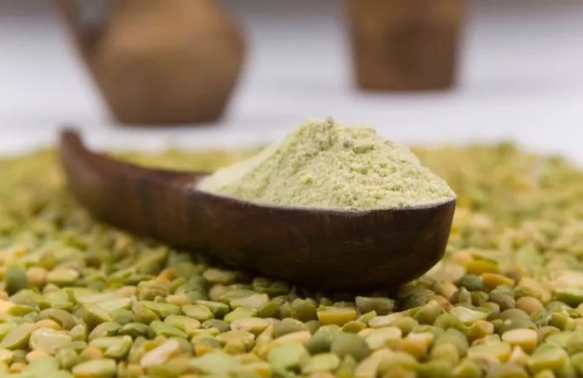According to a recent market analysis by Allied Market Research, the global market for pea protein will be worth 176 million USD by 2025. This is equivalent to growth of 32.6% in the period 2018-2025, and an average annual growth rate of 7.7%.
Factors such as the rising world population, increased health awareness, and the introduction of a growing number of innovative products are driving the growth of the pea protein market. North America is currently the largest market in terms of value and volume. The strongest growth for the forecast period 2018-2025 is forecast for the Asia-Pacific region. A growth rate of as much as 25% is expected there, driven in particular by countries such as China, Japan and Australia.
Pea protein isolate accounted for the largest share of industrial sales in 2017. This market segment is expected to grow at a rate of 22.8%. Isolates contain about 95% protein and are used as a protein source in the sports nutrition industry. The expansion of the sports nutrition sector in developed countries such as the USA, Germany, and Great Britain is expected to further increase product consumption in the coming years. Market growth is also predicted for the pea protein concentrate and textured pea protein product segments.
According to the report, the dietary supplement segment is expected to be the fastest-growing segment for pea protein, with a growth rate of 24.2% over the forecast period. Features such as a high amino acid profile, excellent emulsification, good water binding properties, and high solubility have increased acceptance of pea protein as an ingredient in recent years and will continue to contribute to market growth in the future.

Pea protein from green and yellow peas contains all the essential amino acids required for a healthy body. It is 100% vegan and lactose-free, and is therefore particularly suitable for people with allergies or intolerances. The favorable nutritional profile of pea proteins, the high demand for plant-based proteins due to the steadily growing vegan population, and growth in the food and beverage industry are driving the growth of the global pea protein market. Rising demand for sports nutrition and weight management products made from pea protein and the increasing use of pea proteins as an alternative source of protein in pet food have also opened up new market opportunities. Product formulation challenges, the market penetration of other vegan protein sources, and further consumer awareness all offer further scope for development potential.
